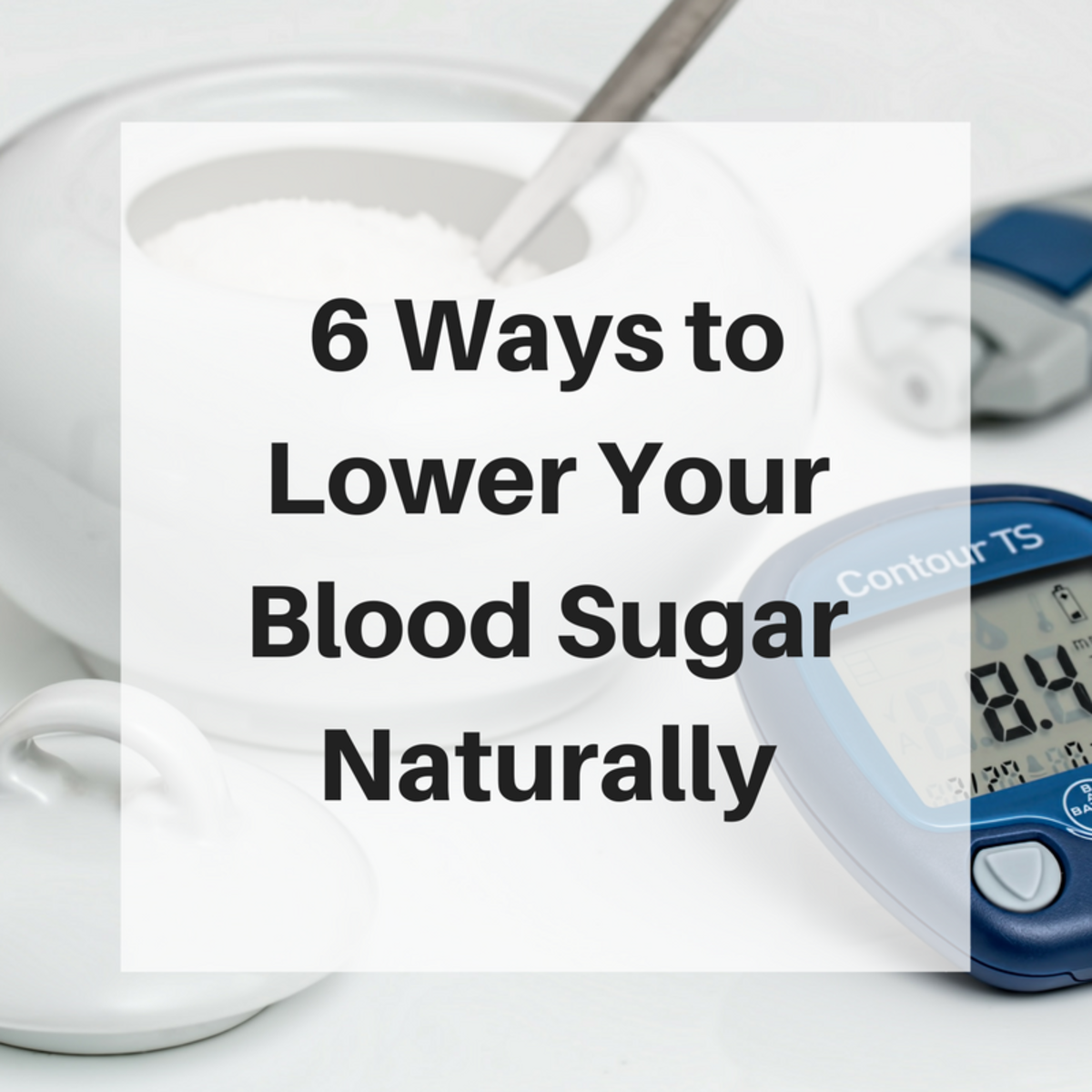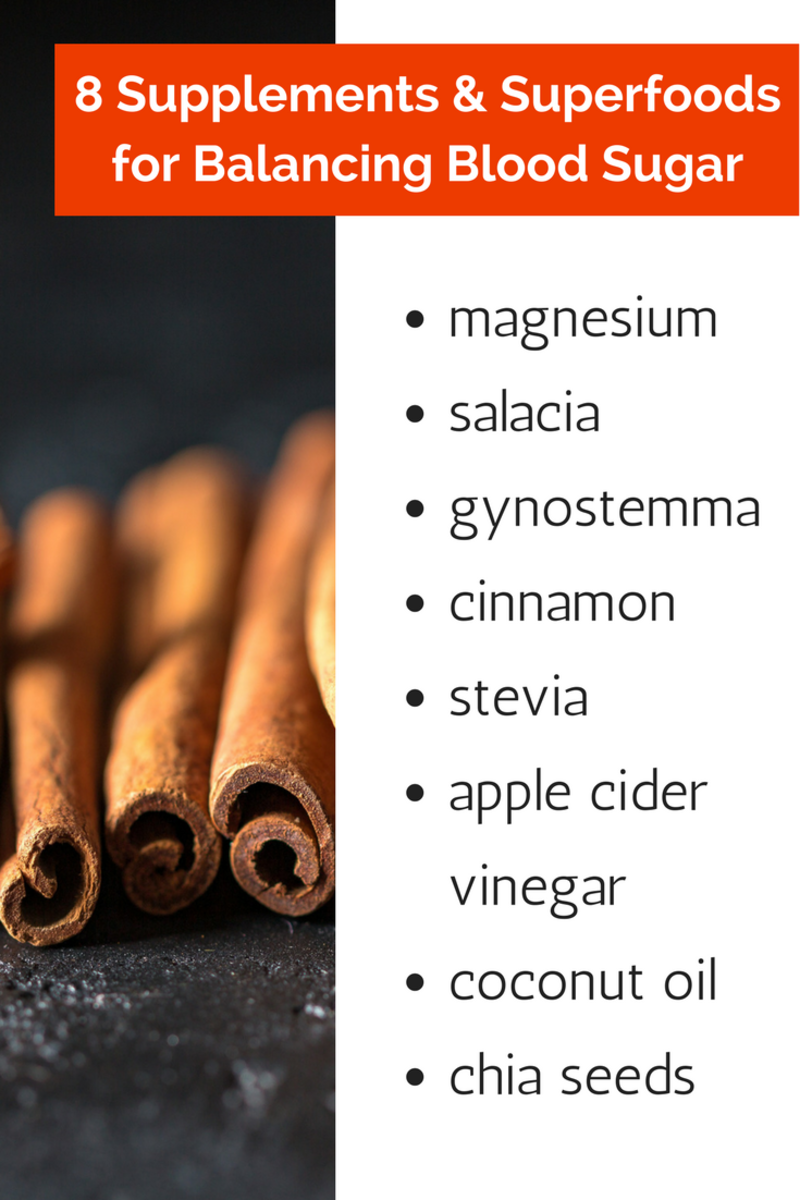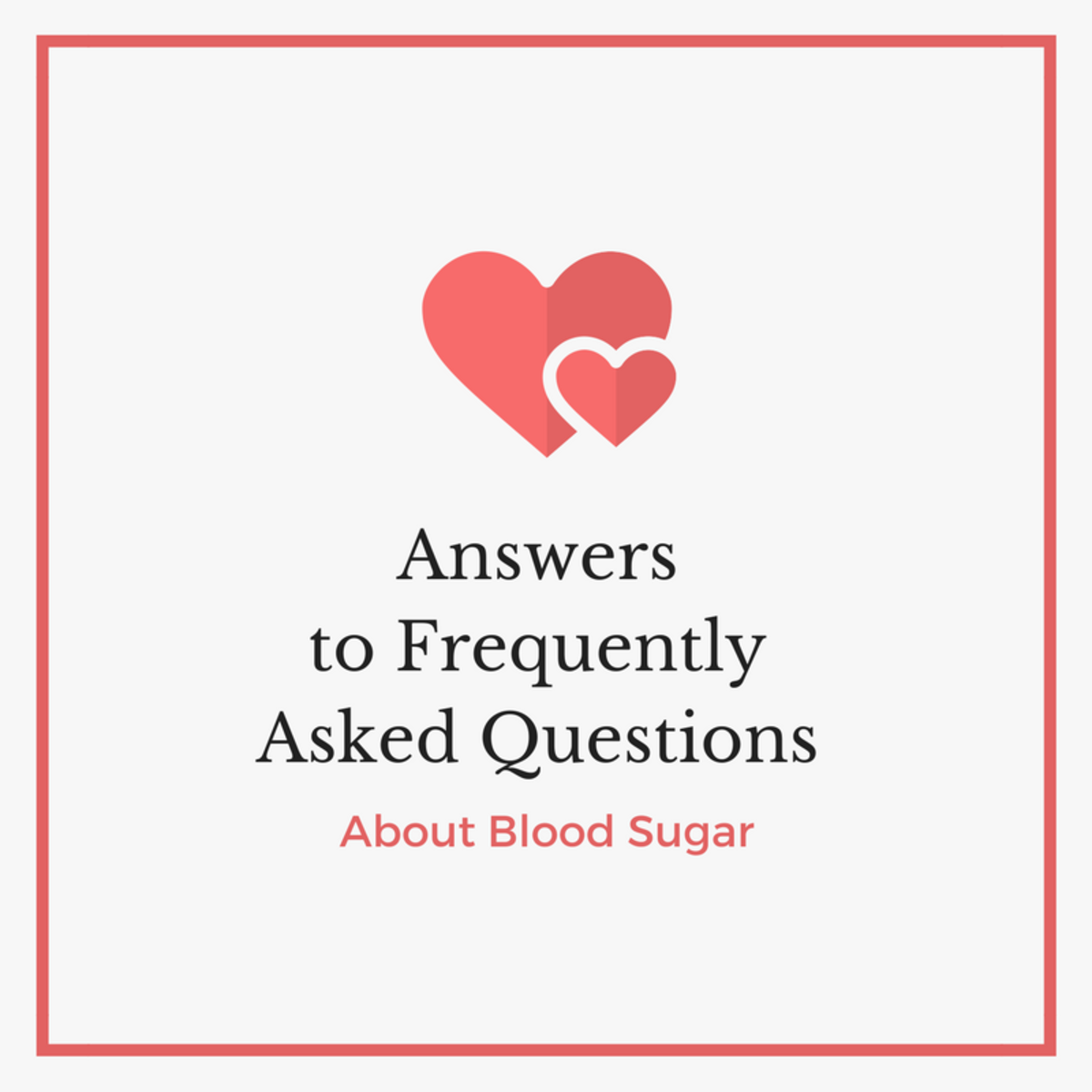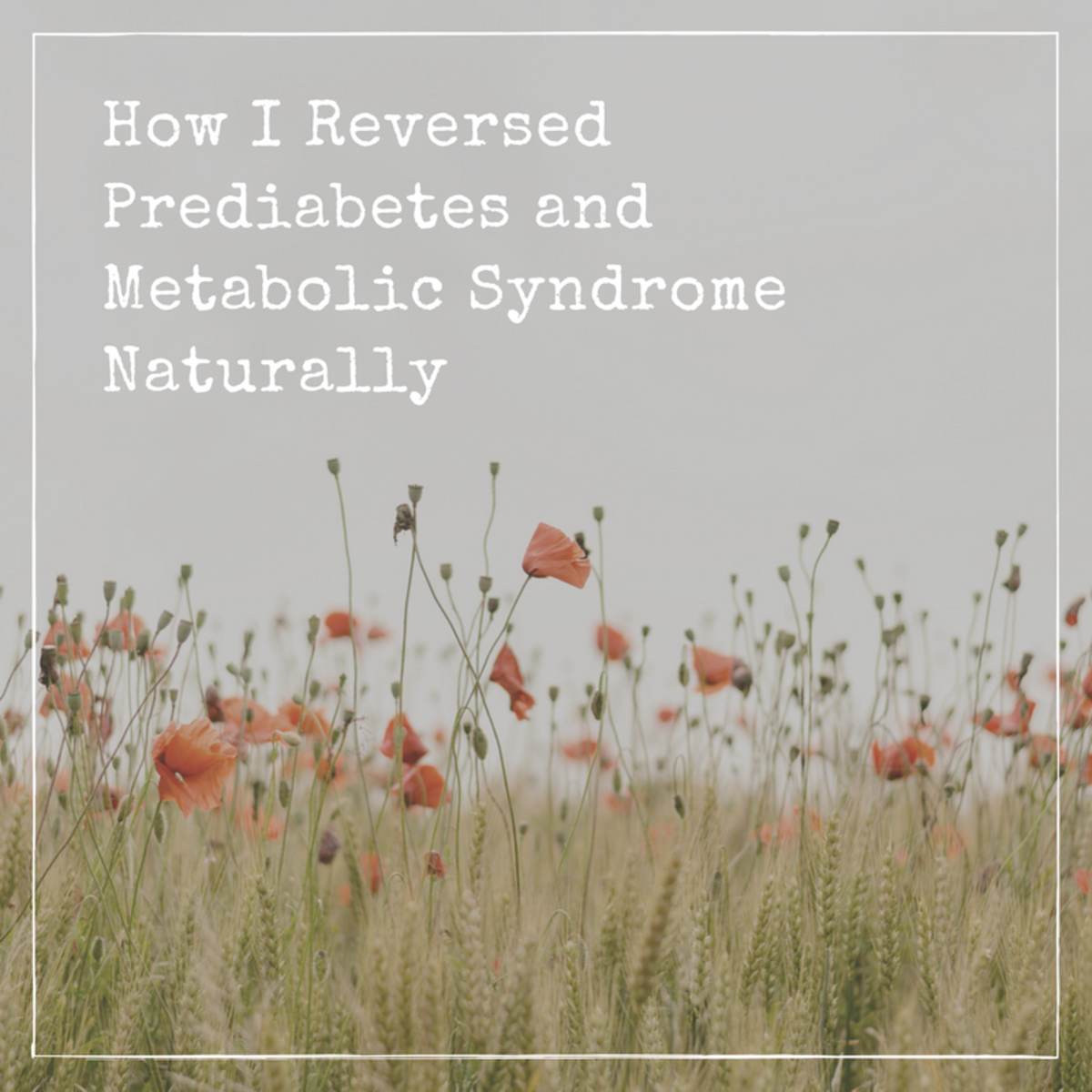6 Ways to Lower Your Blood Sugar Naturally
Updated on March 14, 2019
In this article, I will share some natural ways to lower blood sugar that worked for me. These tried-and-true techniques are powerful; however, I want to emphasize that you should always consult your doctor before pursuing a new treatment or health strategy. It is very important that your treatment is tailored to your specific situation. With your doctor's approval, pick some techniques from this article, apply them for a few weeks, and see what kind of results you get.
If you're overwhelmed with all the information here, start with exercise and removing processed grains and sugar from your diet. Then, fine-tune with a few more tips as needed. My favorite daily techniques are exercising, adding stevia to my tea, and eating small meals regularly. On challenging days or special times when I have sugar, I add the other supplements as well. Learn what works for you and be consistent. Cheers to your health!
6 Natural Ways to Lower Blood Sugar
- Stay fit with daily aerobics and strength-training exercises.
- Relieve stress to beat belly fat and insulin resistance.
- Eat small, eat often, and stay hydrated.
- Eat plenty of low-glycemic, high-fiber foods such as non-starchy vegetables.
- Have your doctor check for high cholesterol or underlying thyroid issues.
- Try herbal supplements and superfoods such as salacia, chia, and cinnamon.
This Article Will Provide:
- What you need to know to get started with each of these six tips
- A list of eight effective supplements and superfoods shown to lower blood sugar
- A healthy, quick, and delicious chia porridge recipe you'll love!
- Easy-to-understand answers to FAQs about blood sugar

Tip 1: Work Your Heart and Muscles!
Physical activity is one of the easiest ways to use up glucose and take your body out of insulin resistance. In addition to burning fat, aerobics and strength-training exercise helplower blood sugar, blood pressure, and cholesterol, and is vital for heart and bone health!
Exercise vigorously for 20–30 minutes a day for optimal benefits. If you're not ready for high-intensity cardio, you can start off with brisk walking and gradually work your way up to jogging or running.
My favorite kind of exercise is Zumba. This fun fitness program is more like a dance party! If you're part of the baby boomer generation—or just out of shape—there's a gentle, beginner-friendly class called Zumba Gold. You can take classes in person at a dance or recreation center near you or watch free classes from home on YouTube! I just ordered the DVDs so I can continue exercising during the winter in Montana. You gotta love Zumba!
Caution
If you're diabetic, and especially if you have a specific complication, talk to your doctor before starting an exercise regimen to determine what kinds of activity are safe for you. Be sure to monitor your blood sugar before and after exercise to avoid dangerous conditions.
Tip 2: Relieve Stress to Beat Belly Fat
Studies have shown that belly fat can increase dramatically under acute and chronic stress due to the release of cortisol from the adrenals, especially in women. This accumulated fat increases the risk of heart disease and insulin resistance.
To beat belly fat and lower your cortisol levels, follow your vigorous exercise with a relaxing cool-down such as yoga, body massage, or meditation.
Tip 3: Eat Small, Eat Often, and Stay Hydrated
Eat small amounts of food frequently throughout the day. It's easier on the intestines, pancreas, and digestive enzymes.
You could eat four to six meals of 400–600 calories each, depending on your caloric intake. Eat at least every four hours and increase your water intake. Chronic dehydration is hard on the blood, which carries not only glucose but insulin.
Tip 4: Eat Low-Glycemic, High-Fiber Foods
The glycemic index (GI) is a numerical system of measuring how fast a carbohydrate triggers a rise in circulating blood sugar. The higher the number, the greater the blood sugar response. A low GI food will cause a small rise, whereas a high GI food will trigger a dramatic spike. Below is just a small sampling of foods to give you an idea of low, medium, and high GI foods. Stick to low and medium to keep your blood sugar down.
Eating foods that are high in fiber will also slow down your body's absorption of sugar and will help regulate glucose levels. Non-starchy vegetables and legumes are two great examples of low-glycemic and high-fiber foods!
You can use this glycemic index database to browse a list of low GI foods or find the index of a particular food.
Low GI (Less Than 55)
|
Medium GI (56-69)
|
High GI (More Than 70)
|
|---|---|---|
carrots
|
brown rice
|
bagel
|
legumes
|
coconut
|
corn flakes
|
pasta
|
couscous
|
french fries
|
peas
|
mango
|
melons
|
sweet potato
|
pita bread
|
pineapple
|
zucchini
|
wild rice
|
popcorn
|
Tip 5: Get a Checkup for Underlying Issues
If you find lowering your blood sugar to be particularly difficult despite your efforts, make an appointment with your doctor to check for high cholesterol or any underlying issues in your thyroid.
While lowering your cholesterol won't directly lower your blood sugar, it lessens your body's chance of becoming insulin resistant. High cholesterol can also be a symptom of metabolic syndrome, which is a precursor to heart disease and a host of other problems, including diabetes.
If your thyroid is not working properly, it can create a pancreatic imbalance, which also leads to insulin resistance. Ask your doctor to check your thyroid levels, especially if you're an older female.
Tip 6: Try Supplements and Superfoods
Think of this tip as an added bonus to the core five! Once you've cultivated a healthy diet and exercise routine, consider a boost from one or more of these natural supplements and superfoods that many people with prediabetes—inlcuding myself—have had success with.
Always consult with your doctor before trying any supplement or modifying your diet. While there are some studies that support the potential benefits of these supplements and superfoods, remember they are not guaranteed antidotes nor are they completely free of side effects, especially in high doses. Use with caution and your doctor's approval!

Disclaimer
Some of these supplements may be unsafe when used in conjunction with diabetic medications. Always consult your doctor before use and monitor your blood sugar regularly to ensure it doesn't become too low.
1. Magnesium
Carolyn Dean, MD, ND is a women's health, diet and nutrition expert, and author of The Magnesium Miracle. Her recommendation for lowering blood sugar naturally is to supplement with magnesium, which has been shown to balance blood sugar and reduce the risk of diabetes.
"Proper amounts of this mineral are essential for proper glucose balance and transport, as well as regulating energy production and releasing insulin—all necessary elements of carbohydrate metabolism. When insulin is released from the pancreas, magnesium in the cell normally responds and opens the cell to allow entry of glucose, but in the case of magnesium deficiency combined with insulin resistance, the normal mechanisms just don’t work. However, the higher the levels of magnesium in the body, the greater the sensitivity of the cells to insulin and the possibility of reversing the problem," she explains.
Dr. Dean recommends mixing a magnesium citrate powder with hot or cold water to sip throughout the day or adding plenty of magnesium-rich foods to your diet.
2. Salacia
This Ayurvedic herb has been used in India and Sri Lanka for centuries, helps regulate blood sugar and insulin levels, supports healthy blood lipids, and may aid weight loss! Salacia contains two potent alpha-glucosidase inhibitors that may help regulate carbohydrate-metabolic imbalances. You can find salacia in the form of capsules, powder, or tea.
3. Gynostemma
The American Diabetes Association has approved of gynostemma, also known as jiaogulan, as a safe and effective treatment for Type 2 diabetes. There is strong evidence that this herb lowers blood sugar and A1C levels in addition to improving insulin sensitivity. Multiple studies also suggest that it may lower blood pressure, balance cholesterol, alleviate anxiety and depression, and help protect the overall body from diabetic damage.
4. Stevia
This plant-based alternative sweetener may help lower blood sugar and blood pressure, although there is some debate. In addition to being sugar-free, stevia extract is also calorie free and may help you satisfy your sweet tooth while losing weight. I like to carry stevia packets that I can add to my water or a cup of green tea.
5. Cinnamon
Some studies suggest taking one or more gram of cinnamon per day can lower fasting blood sugar and balance cholesterol. A fabulous twofer! One wonderful way to incorporate this spice into your diet is to make tea with cinnamon sticks by boiling 2–3 sticks in 4 cups of water for 20 minutes. Or simply add it to oatmeal, smoothies, or whole grain cinnamon toast. As suggested by a reader, use Ceylon cinnamon for the most effective benefit.
6. Apple Cider Vinegar
Apple cider vinegar has been shown to lower postprandial blood sugar and improve insulin sensitivity. Studies also suggest that if you ingest the vinegar before bedtime, it will lower your fasting glucose the following morning. Drinking large amounts of vinegar can be detrimental to your teeth and stomach, so try a splash of ACV as a salad dressing or put a teaspoon of it in your water.
7. Coconut Oil
Coconut oil may help lower cholesterol, support healthy lipids, and boost glucose tolerance. You can use small amounts of coconut oil in countless ways, from using it as a cooking oil, a butter replacement, or adding a spoonful to black coffee!
8. Chia Seeds
Chia seeds are a popular superfood full of health benefits. They help balance your blood sugar and prevent it from spiking throughout the day. Chia seeds are high in fiber, protein, boron, and magnesium. They're also great for weight loss, thyroid problems (which can affect your pancreas), and intestinal regularity. You can throw a spoonful of chia seeds into a smoothie or you can try the following porridge recipe for a healthy breakfast!

Easy Hemp and Chia Seed Porridge Recipe
This low GI breakfast makes a fantastic start to your day and takes just minutes to prepare. The seeds are odorless and have no taste, so plan on adding your favorite toppings like nuts and dried fruit for a great flavor!
Cook Time
Cook time: 5 min
Ready in: 5 min
Yields: 1 light serving
Ingredients
- 2 tbsp chia seeds
- 2 tbsp hemp seeds
- Toppings of your choice: coconut flakes, dried or fresh fruit, yogurt, or nuts
Instructions
- Place seeds into a small bowl or ramekin and add 1/2 cup of boiling water.
- Let sit for 3-4 minutes or until thickened.
- Add tasty toppings and enjoy!

How Does Blood Sugar Work?
The digestive system breaks down food and turns the starches from carbohydrates into glucose as it enters the bloodstream. Ideally, this glucose is immediately used up as fuel by the body's cells. However, the bloodstream can only handle a very small amount of glucose at a time, and too much of it is toxic.
In the event of too much glucose, the pancreas releases insulin—a hormone with the function of regulating blood sugar by transporting glucose out of the bloodstream and into other parts of the body. Excess glucose is first stored in the liver and muscles as glycogen. If those are already full, it's then stored as triglycerides, cholesterol, and fat. In the case of insulin resistance or diabetes, high amounts of glucose remain in the bloodstream and can lead to damage of blood vessels, nerves, and organs.
In an optimally healthy body, glucose is consumed as minimally as needed for energy, and blood sugar levels are generally kept in the low range (70–85mg/dl).
What Causes a Spike or Drop in Blood Sugar?
Generally speaking, blood sugar spikes are caused by eating meals that are high in carbohydrates and sugar that are converted into glucose as they enter the bloodstream. Digestion later causes a drop in blood sugar as insulin moves the glucose out of the bloodstream as quickly as possible.
However, there are multiple factors that can cause blood sugar levels to fluctuate such as stress, medication, exercise, and sleep to name a few.
Why Is My Blood Sugar High in the Morning?
In addition to hormonal changes that naturally cause your blood sugar to rise, your liver also releases stored glucose into the bloodstream while you're asleep and fasting. However, if your body is insulin resistant, the glucose your liver releases is not used up and remains in the bloodstream, causing a spike in blood sugar.
What Is Insulin Resistance?
Having excess glucose in the bloodstream causes the pancreas to release excess insulin. If glucose levels are constantly high, meaning cells are constantly exposed to insulin, the cell receptor sites can become insulin resistant.
Insulin resistance means that glucose cannot be effectively transported to other parts of the body and so it stays in the blood. This makes the pancreas secrete even more insulin. Eventually, the pancreas gets tired—very tired—and gives up. That's when prediabetes becomes diabetes.
What Is the Difference Between Hyperglycemia and Hypoglycemia?
If you're not sure what your blood sugar is, you can purchase a simple at-home kit to monitor your body's natural levels, find out which foods might be affecting you negatively, and learn what your fasting blood glucose level is.
You can also visit your doctor for an A1C test to examine your average blood sugar and check for prediabetes or diabetes.
High Blood Sugar (Hyperglycemia)
Range: Usually 130 mg/dl or higher if fasting, 180 mg/dl or higher after a meal
Symptoms: Frequent urination, increased thirst, headaches, blurred vision
Risks: High blood sugar can not only make you feel wonky, but it can also negatively affect many organs over a longer period of time. Hyperglycemia can cause damage to the vessels that supply blood to vital organs, which can increase the risk of heart disease and stroke, kidney disease, vision problems, and nerve problems. In severe cases, it can lead to ketoacidosis, which is a life-threatening diabetic condition that needs emergency medical attention.
Low Blood Sugar (Hypoglycemia)
Range: Usually 70 mg/dl or lower
Symptoms: Shakiness, sweating, hunger, pale skin
Risks: Note that is possible to have hypoglycemia unawareness, meaning you can have dangerously low blood sugar without experiencing obvious symptoms. Untreated hypoglycemia can lead to loss of consciousness and subsequent dangers such as falls or other fatal accidents, so be sure to monitor your blood sugar regularly and consult an appropriate plan with your doctor.
What Is Considered a Healthy or Normal Range of Blood Sugar?
Non-Diabetics
|
Diabetics
| |
|---|---|---|
A1C
|
Less than 5.7%
|
Less than 7%
|
eAG
|
Less than 126 mg/dl
|
Less than 154 mg/dl
|
Fasting
|
70–99 mg/dl
|
80–130 mg/dl
|
2 hours after a meal
|
Less than 140 mg/dl
|
Less than 180 mg/d;
|
While the ideal range for your body will vary depending on several unique factors, the American Diabetes Association suggests the following targets.

